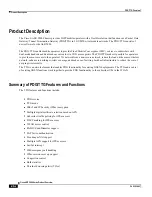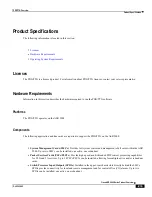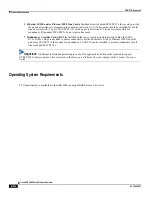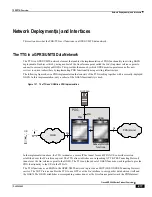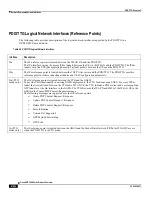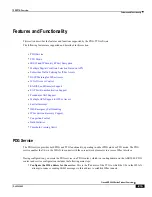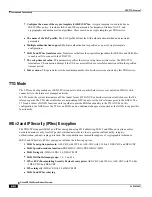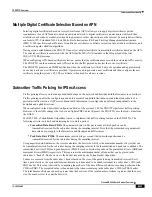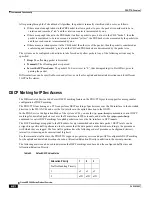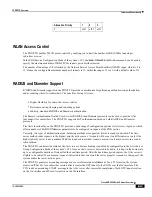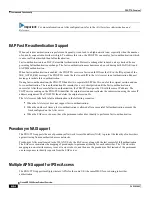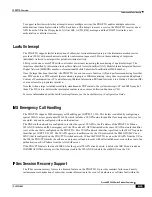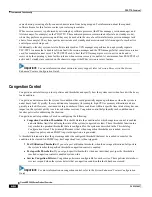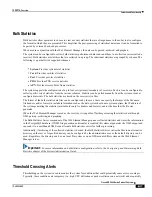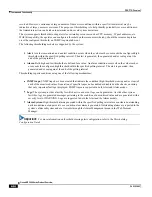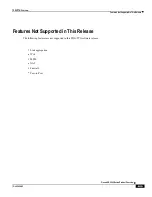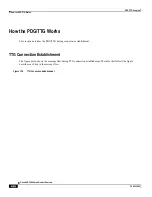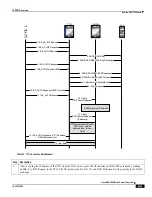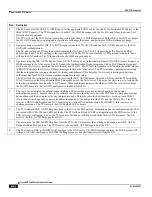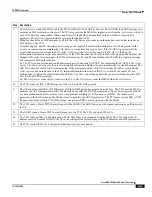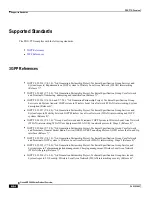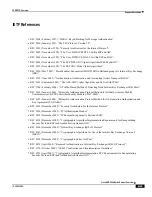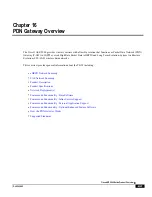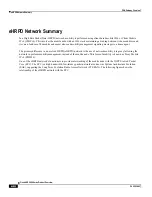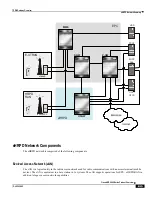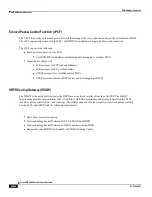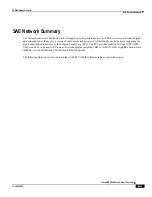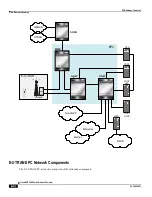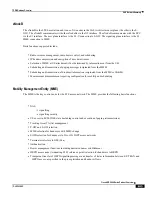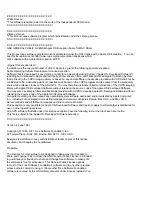
PDG/TTG Overview
▀ Features and Functionality
▄ Cisco ASR 5000 Series Product Overview
OL-22938-02
resolved. However, continuous or large numbers of these error conditions within a specific time interval may be
indicative of larger, more severe issues. The purpose of thresholding is to help identify potentially severe conditions so
that immediate action can be taken to minimize and/or avoid system downtime.
The system supports threshold crossing alerts for certain key resources such as CPU, memory, IP pool addresses, etc.
With this capability, the operator can configure a threshold on these resources whereby, should the resource depletion
cross the configured threshold, an SNMP trap would be sent.
The following thresholding models are supported by the system:
Alert:
A value is monitored and an alert condition occurs when the value reaches or exceeds the configured high
threshold within the specified polling interval. The alert is generated, then generated and/or sent again at the
end of the polling interval.
Alarm:
Both high and low threshold are defined for a value. An alarm condition occurs when the value reaches
or exceeds the configured high threshold within the specified polling interval. The alert is generated, then
generated and/or sent again at the end of the polling interval.
Thresholding reports conditions using one of the following mechanisms:
SNMP traps:
SNMP traps have been created that indicate the condition (high threshold crossing and/or clear) of
each of the monitored values. Generation of specific traps can be enabled or disabled on the chassis, ensuring
that only important faults get displayed. SNMP traps are supported in both Alert and Alarm modes.
Logs:
The system provides a facility for which active and event logs can be generated. As with other system
facilities, logs are generated messages pertaining to the condition of a monitored value and are generated with a
severity level of WARNING. Logs are supported in both the Alert and the Alarm models.
Alarm System:
High threshold alarms generated within the specified polling interval are considered outstanding
until a condition no longer exists or a condition clear alarm is generated. Outstanding alarms are reported to the
system‘s alarm subsystem and are viewable through the Alarm Management menu in the Web Element
Manager.
Important:
For more information on threshold crossing alert configuration, refer to the
Thresholding
Configuration Guide
.
Содержание ASR 5000 Series
Страница 1: ......
Страница 26: ......
Страница 48: ...New In Release 10 0 SCM Features Cisco ASR 5000 Series Product Overview OL 22938 02 ...
Страница 50: ......
Страница 58: ......
Страница 67: ...Product Service and Feature Licenses Default Licenses Cisco ASR 5000 Series Product Overview OL 22938 02 ...
Страница 68: ......
Страница 126: ......
Страница 138: ......
Страница 146: ......
Страница 218: ......
Страница 236: ......
Страница 356: ......
Страница 374: ......
Страница 422: ......
Страница 496: ......
Страница 572: ......
Страница 654: ......
Страница 700: ......
Страница 726: ......
Страница 784: ......
Страница 816: ......
Страница 839: ...Network Address Translation Overview How NAT Works Cisco ASR 5000 Series Product Overview OL 22938 02 ...
Страница 841: ...Network Address Translation Overview How NAT Works Cisco ASR 5000 Series Product Overview OL 22938 02 ...
Страница 844: ......
Страница 906: ......
Страница 926: ......
Страница 942: ......
Страница 943: ...Cisco ASR 5000 Series Product Overview OL 22938 02 Chapter 30 Technical Specifications ...
Страница 966: ......
Страница 967: ...Cisco ASR 5000 Series Product Overview OL 22938 02 Chapter 31 Safety Electrical and Environmental Certifications ...
Страница 972: ......

